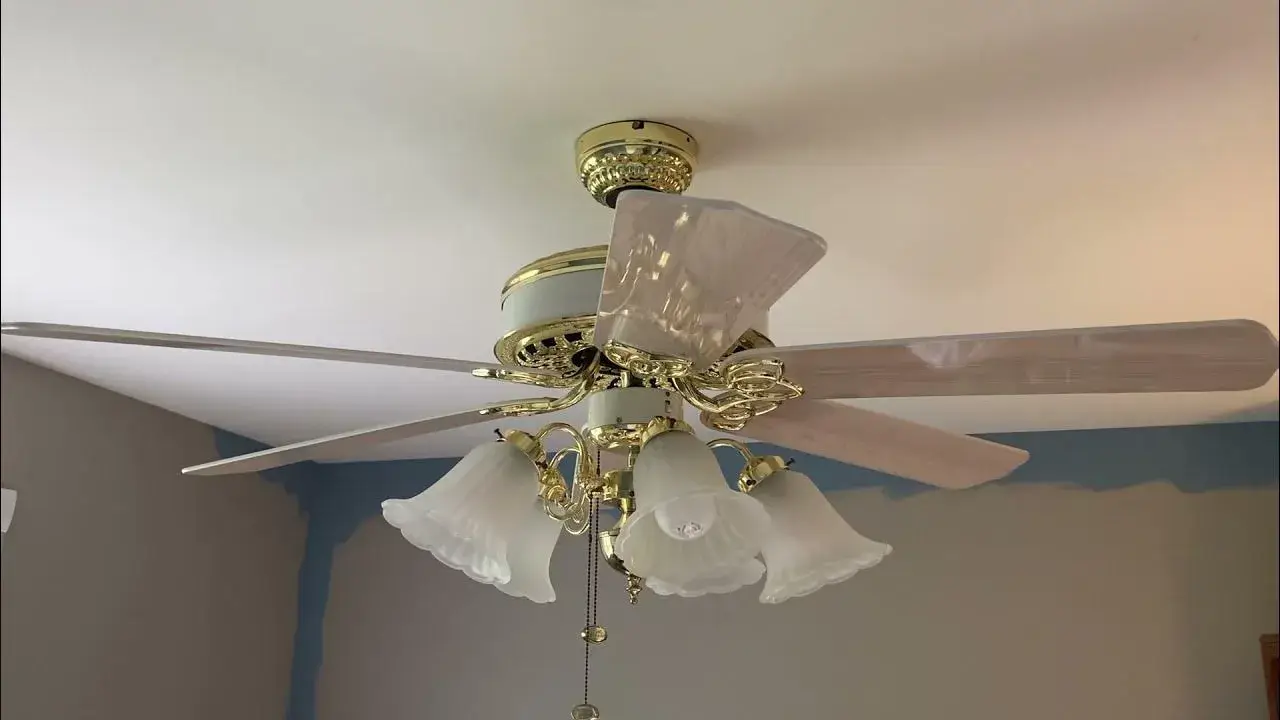The right size ceiling fan for your room depends on the room’s dimensions, ceiling height, and airflow needs. A ceiling fan that is too small or too large for your space can affect its performance, appearance, and energy efficiency. In this article, we will explain how to measure your room and ceiling fan, how to use a sizing chart, and how to consider other factors such as blade pitch, motor quality, and design style.
Measuring Your Room and Ceiling Fan
The first step to choosing the right size ceiling fan is to measure your room and ceiling fan. You will need a tape measure, a ladder, and a calculator. Here are the steps to follow:
- Measure the length and width of your room in feet. Multiply them together to get the area in square feet. For example, if your room is 12 feet by 15 feet, the area is 180 square feet.
- Measure the height of your ceiling from the floor to the lowest point in feet. This will help you determine the optimal downrod length for your ceiling fan. A downrod is the metal rod that connects the ceiling fan to the ceiling mount. The higher the ceiling, the longer the downrod you will need to ensure proper airflow and clearance.
- Measure the diameter of your ceiling fan in inches. This is the distance from the tip of one blade to the tip of the opposite blade. You can also check the product specifications or the manufacturer’s website for this information.
Using a Sizing Chart
Once you have the measurements of your room and ceiling fan, you can use a sizing chart to find the best match. A sizing chart is a table that shows the recommended ceiling fan size based on the room size. Here is an example of a sizing chart:
Table
| Room Size (Square Feet) | Ceiling Fan Size (Inches) |
|---|---|
| Up to 75 | 29 to 36 |
| 76 to 144 | 36 to 42 |
| 144 to 225 | 44 to 50 |
| 225 to 400 | 50 to 54 |
| Above 400 | 54 or larger |
To use the sizing chart, simply find the row that corresponds to your room size and look at the column that shows the ceiling fan size. For example, if your room is 180 square feet, the recommended ceiling fan size is 44 to 50 inches. You can also use a calculator to find the exact ceiling fan size for your room by dividing the room area by 2.5. For example, 180 / 2.5 = 72. This means that a 72-inch ceiling fan would be ideal for your room.
Considering Other Factors
Besides the room and ceiling fan size, there are other factors that can affect your choice of ceiling fan. These include:
- Blade pitch: This is the angle of the blades relative to the horizontal plane. A higher blade pitch means more air movement, but also more energy consumption and noise. A lower blade pitch means less air movement, but also less energy consumption and noise. The optimal blade pitch for most ceiling fans is between 10 and 15 degrees.
- Motor quality: This is the engine that powers the ceiling fan. A high-quality motor is durable, quiet, and efficient. A low-quality motor is prone to overheating, humming, and wobbling. Look for ceiling fans that have heavy-duty motors, sealed bearings, and multiple speeds.
- Design style: This is the aesthetic appeal of the ceiling fan. You want to choose a ceiling fan that matches your room’s decor and personal taste. There are many styles to choose from, such as traditional, modern, rustic, industrial, and tropical. You can also customize your ceiling fan with different finishes, colors, lights, and accessories.
Conclusion
Choosing the right size ceiling fan for your room is not a difficult task if you follow these steps:
- Measure your room and ceiling fan
- Use a sizing chart or a calculator
- Consider other factors such as blade pitch, motor quality, and design style
By doing so, you will enjoy the benefits of a ceiling fan that is comfortable, efficient, and attractive. If you need more help or advice, you can always consult a professional or visit a reputable online store. Happy shopping!

